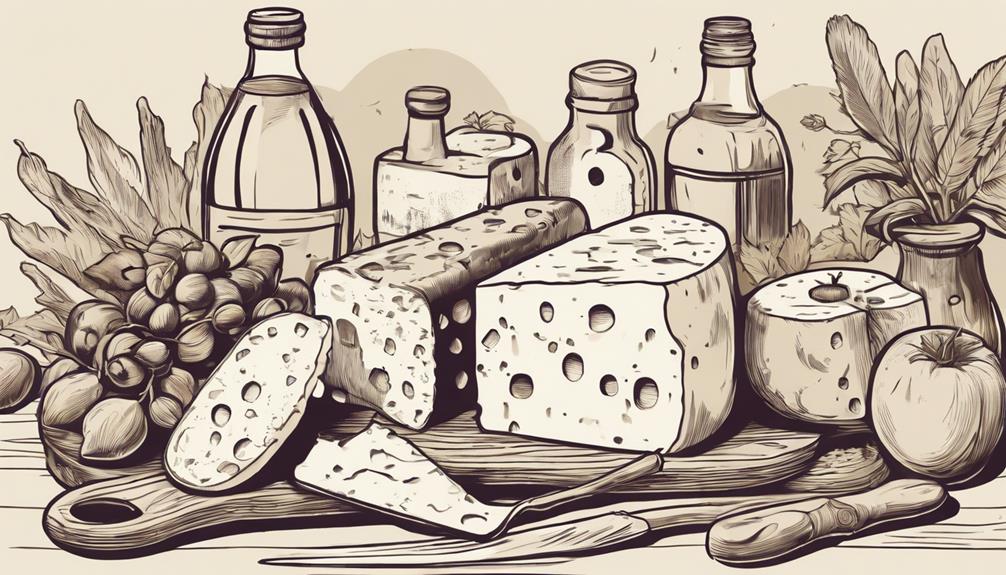See All: Cheese Making
Watch How To Do This Here…
YES! You can make cheese at home. Take our FREE 4-Part video training series to simplify cheesemaking for everyone. No waste. No overwhelm. No missing steps. You can make delicious, healthy cheese, even if you only have access to grocery store milk and regular kitchen equipment…
Click Here To Watch Step By Step Now
“Hey, how’s it going? I’m planning a fancy cheese and wine evening for some friends in Paris. I want everything to be just perfect. Can you please tell me what pairings go well with different European cheeses? There are so many options, and I’m feeling a bit overwhelmed. Thanks in advance!” – Andrew, Paris, France.
What Are The Traditional Pairings For Different European Cheeses?
Hi Andrew! Organizing a cheese and wine evening sounds like a splendid idea, and I’d be delighted to help make it perfect. Let’s talk about the traditional pairings for various European cheeses. The right pairing can really elevate the flavors and make your gathering an unforgettable experience. Here’s a guide to help you navigate through the options.
French Cheeses
France is known for its diverse cheese selection. Here are a few traditional pairings to consider:
- Brie: Often paired with Champagne or a dry white wine like Chablis. The light and bubbly nature of these wines complements the creaminess of the Brie.
- Roquefort: This blue cheese is well-matched with Sauternes (a sweet wine), as the sweetness balances the sharpness of the blue mold.
- Camembert: Try pairing it with a Norman cider or a Burgundy red wine. The acidity of the cider or the subtlety of Burgundy enhances the rich flavor.
- Comté: Aged Comté goes wonderfully with Vin Jaune from Jura. This nuttier wine echoes the nutty, caramel-like flavors of an aged Comté.
Italian Cheeses
Italy brings a whole host of delights to the cheese board. Here’s what you might like:
- Parmesan (Parmigiano Reggiano): Shave some over a dish and enjoy it with a Chianti or other red Tuscan wines. The tannins in these wines do a great job of slicing through the salty, crystalline structure of Parmesan.
- Gorgonzola: A creamy Gorgonzola goes nicely with a sweet Moscato d’Asti, a balance of sweet and tangy.
- Mozzarella: Fresh Mozzarella pairs well with a light, zesty Pinot Grigio or a light lager, refreshing and not overpowering.
- Pecorino Romano: The salty, strong flavor of Pecorino Romano is best balanced with full-bodied wines like Barolo or Super Tuscans.
Spanish Cheeses
Spain has some amazing cheeses with equally impressive pairings:
- Manchego: This staple Spanish cheese is best enjoyed with a Tempranillo or a Sherry. The nuttiness of Manchego complements the berry flavors and subtle oakiness of Tempranillo.
- Idiazabal: This smoky cheese is perfect with a Ribeiro or Cava. The slight sparkling nature of Cava contrasts well with the smoky undertones.
- Mahon: This cheese pairs nicely with Cava or a Viura (white Rioja). These wines bring out the buttery notes in the cheese.
British Cheeses
Going over to the UK, the cheese scene is just as exciting:
- Cheddar: A well-aged Cheddar pairs beautifully with an English Pale Ale or a full-bodied red wine such as Bordeaux. The bold flavors dance nicely together.
- Stilton: This classic blue cheese is fantastic with Port wine. The sweetness of the Port offsets the intense, tangy blue veins.
- Double Gloucester: Try it with a Pale Ale or Malbec. Both drinks enhance its rich, buttery texture.
Swiss Cheeses
Swiss cheeses often bring the comfort and heartiness perfect for colder climates:
- Gruyère: This nutty cheese is best paired with a light red wine like Beaujolais or a white wine such as Riesling. The wine’s light acidity complements the rich, nutty flavors.
- Emmental: Ideal with a Pinot Noir or a Crisp Lager. The slight sweetness and bubbly nature of these drinks bring out the cheese’s mild, nutty undertones.
- Raclette: Traditionally served melted, it pairs excellently with Savoy white wines or a dry Chardonnay. The freshness of these wines cuts through the melted cheese texture.
German Cheeses
Germany may not be the first place you think of for cheese, but it has some contenders worth mentioning:
- Allgäuer Emmentaler: This distinctive cheese goes well with German Riesling or a crisp beer. The wine’s acidity and the beer’s refreshing quality bring out the nutty flavors.
- Butterkäse: Works beautifully with a Kabinett Riesling or mild, light beer. The wine’s fruitiness or the beer’s lightness complement its smooth, creamy texture.
Dutch Cheeses
The Netherlands bring their own unique and coveted cheeses:
- Gouda: Aged Gouda pairs wonderfully with a Ripe Full-bodied Red like Côtes du Rhône. The wine’s robust characteristics match the caramel and nutty flavors of the cheese.
- Edam: Best enjoyed with a Lager or a crisp Pinot Grigio. Both drinks enhance the mild, slightly nutty undertones of Edam.
Andrew, creating a memorable cheese and wine evening involves selecting the right pairings, respecting the traditional flavors, and also considering the preferences of your guests. An understanding that cheese and drinks can evolve and enhance each other’s characteristics is the magic ingredient.
Final Thoughts…
Andrew, thanks for reaching out. You’re now armed with traditional pairings that will surely impress your guests. Enjoy every moment of your evening, and remember that the best pairings are those enjoyed in good company. Bon appétit!
Return To: Cheese Making
Free Step By Step Cheese Making Videos…
YES! You can make cheese at home. Take our FREE 4-Part video training series to simplify cheesemaking for everyone. No waste. No overwhelm. No missing steps. You can make delicious, healthy cheese, even if you only have access to grocery store milk and regular kitchen equipment…

